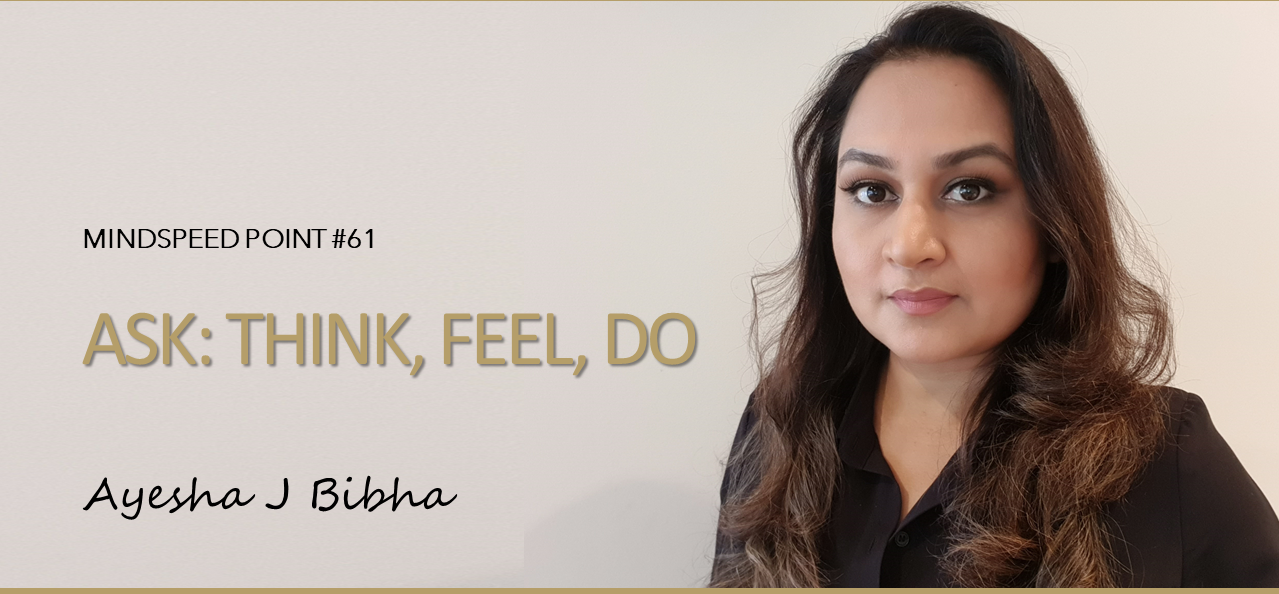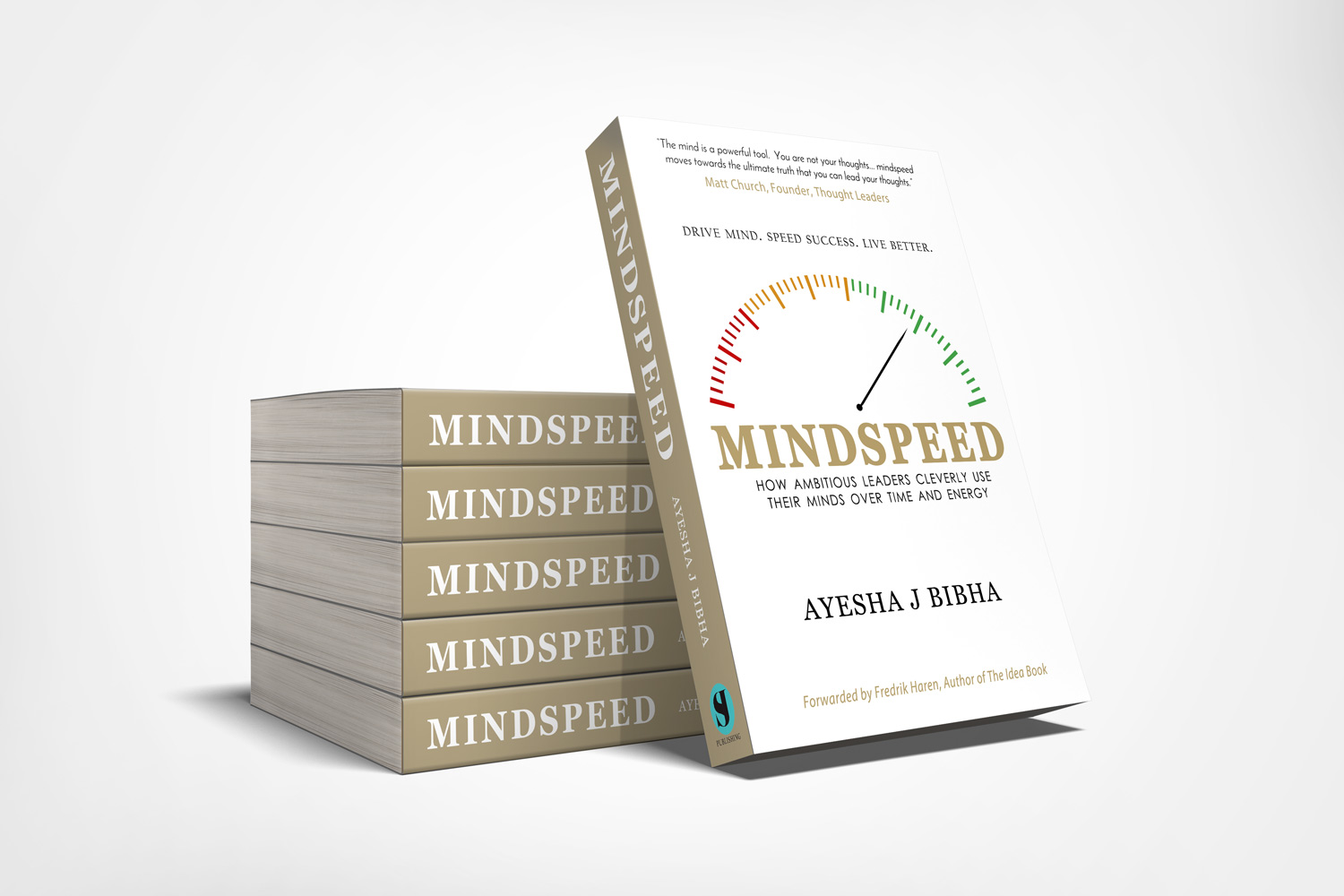“…the best thing you can do for your colleagues under pressure is to prioritize yourself, and be an oasis of peace for them to visit.” wrote Peter Cook, one of my mentors in Thought Leadership Practice
Reading these lines made me feel calm, content, and connected, and I realized that it is the best state of my mind, my flow state. But, it is also true that we can not always be calm, content, and connected to this best version of ourselves. When our thoughts, emotions, memories, or people around us continuously cause ripples in our minds. If these ripples produce negative meanings, we start to see everything like a reflection in a distorting mirror!
The most uncomplicated strategy to enable a positive state is to start asking questions. It is also a powerful way to bring new insights. And an understanding changes our mindset!
“Valid questions are better than invalid assumptions.” Matshona Dhliwayo
In the workplace, by asking frequent but focused questions, we can help the team’s minds to stay at the same pace; we can ignite creativity and direct them in the same direction, creating a secure zone for our team to experiment in new ways. Asking questions helps build a common ground of trust and opens up a learning culture.
“Question everything,” Albert Einstein famously said. Personal creativity to organizational innovation occurs through generating information and its meanings. Asking thoughtful questions supports progressive interaction that builds trust, and people become more vulnerable to share information or insights. By asking questions, we can tap into others’ deeper emotions and engage them at a deeper level. This way, we can ignite performance beyond. We can create a culture of curiosity and an experimental mindset without fear. It is the most mindful and transformational process of shifting mental capacity to be an ambitious leader.
Ask to think, feel and do
Ask questions that people need to think to answer; ask questions they can also feel and enjoy answering. And you, as a Mindspeed leader, listen; listen to how they think, what inspires them and how they get confused or fearful. Then give them feedback on their progress, and appreciate them for what they did well. Show empathy to support them to grow to sustain. Being a Mindspeed leader, you can foster the progress of success, support to manage emotions and help people to live a fulfilling life.
A few tips on asking questions:
– Ask tough questions first; that will open the conversation
– Use the right tone and apply empathy
– Balance between privacy and transparency
- Ask the tough questions first
Asking tough questions arouses the emotion of the person. That way, you can understand the feeling behind the conversation. Understand the fear of others. Ask the tricky question first to create a safe zone. To give an ambience that you are a place where they can rely on to discuss more to find a better solution.
Keeping secrets has a cost – mental, emotional and interpersonal.
- Use the right tone and apply empathy
Treat the conversation as a win-win ground, and show respect for each other’s privacy. It is highly important to balance transparency in a social context because keeping secrets has mental, emotional, and interpersonal costs.
Research by Columbia’s Michael Slepian, Jinseok Chun, and Malia Mason shows that keeping secrets—even outside of social interactions—depletes us cognitively, interferes with our ability to concentrate and remember things, and even harms long-term health and well-being. (The Surprising Power of Questions, Alison Wood Brooks and Leslie K. John, HBR, May–June 2018 Issue)
- Balance between privacy and transparency
To maximize the benefits of questioning, you need to minimize the risks of closeness, privacy and emotion. It is a must to decide on the conversation when other people’s feelings are involved and, most notably, when they need to take actions based on it.
In Harvard’s Business School, the teachers run an exercise where we instruct pairs of students to have a conversation. Some students are told to ask a few questions as possible, and some are instructed to ask as many as possible. Among the low-low pairs (both students ask a minimum of questions), participants generally report that the experience is a bit like children engaging in parallel play: They exchange statements but struggle to initiate an interactive, enjoyable, or productive dialogue. The high-high pairs find that too many questions can also create a stilted dynamic. However, the high-low pairs’ experiences are mixed. Sometimes the question asker learns a lot about her partner, the answerer feels heard, and both come away feeling profoundly closer. Other times, one of the participants may feel uncomfortable in his role or unsure about how much to share, and the conversation can feel like an interrogation. (The Surprising Power of Questions, Alison Wood Brooks and Leslie K. John, HBR, May–June 2018 Issue)
Bonus: 9 Questions
There is no question that a question is a powerful tool that could be used to check your speed (mind). These will help you understand your direction, navigation and speed that subconsciously cause your actions (towards or against):
1. What do I want to change in my life or work?
2. What do I want? or What is my intention?
3. What mental muscles do I need to build to facilitate that change?
4. How deeply do I want this for my loved ones and me?
5. So, what matters most to me and what does not? (negotiable and non-negotiables)
6. Who with what qualities matters to me, and how do I create my social circle?
7. Where do I act with a fixed mindset? How could I be more flexible, open and proactive?
8. How often am I paying attention to what I want? (high or low)
9. Am I committed to enjoying the time I reach there or achieving that? Whom do I want to share my feeling?
Onwards,
Ayesha


